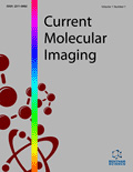Abstract
Positron emission tomography (PET) with 18-fluorodeoxyglucose visualizes hypermetabolic disease processes by metabolic trapping. Since its inception in the late 1970s the method has gained widespread use, primarily in oncology for tumor detection, staging and therapy evaluation. Within the last decades it has also become relevant in the field of inflammation, as this too is characterized by focal hypermetabolism. In this review we report on the current literature (22 studies) on the application of PET and its feasibility in inflammatory bowel disease (IBD) compared with other modalities, e.g. endoscopy, in both the adult and pediatric population. With PET, the entire gastrointestinal tract including transmural and extra-intestinal disease can be visualized in one single examination. Almost without contraindications, PET can be used to diagnose IBD with high sensitivity and specificity, for response evaluation and characterizing of strictures. Using new quantitative techniques, a global disease score which correlates well with current disease indices and endoscopic findings can be determined to measure and monitor the extent and severity of disease.
Keywords: 18-fluorodeoxyglucose positron emission tomography, diagnostic modalities, global disease assessment, inflammatory bowel disease (IBD), therapy response, pediatrics.
Graphical Abstract
 13
13

